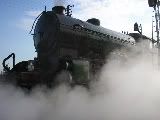I had my TR7 engine rebuilt 5 years ago. It is USA spec, and I removed the air pump and disconnected the EGR piping. Ran great since then, and had no oil leaks (what a pleasure). Recently, after 5000 or so miles, I stated having to work on several oil leaks. Fuel pump seal, rocker oil filler cap, even once some small amount came up through dipstick tube. Lately, my spin on fuel filter adapter is leaking badly. So here is my question:
1-Could the spin on filter's small seal be non-seated, so that the oil is bypassing the filter and causing an increase in oil pressure around the adapter?
2-Is my oil pump spring stuck or is it causing too high oil pressure? (I can not check this myself, I will have my mechanic check pressure)
3-Could this be crankcase emission pressure? All piping and carbon canisters are in place?
Any ideas? I am going to reinstall the old oil canister this week, and see if that solves the leak...but I feel more is going on. I would like to solve this before I store the car for the winter. Any ideas will be appreciated...thanks JOHN









